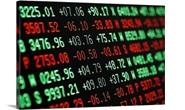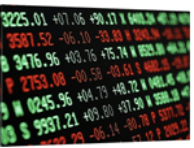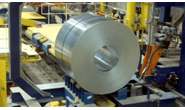Futures

Hot Rolled Futures: Rangebound
Written by Jack Marshall
August 31, 2017
The following article on the hot rolled coil (HRC) steel and financial futures markets was written by Jack Marshall of Crunch Risk LLC. Here is how Jack saw trading over the past week:
Steel
HR futures prices along the curve have been range bound this past week on modest trading activity. The quiet week could be chalked up to the fact that a good portion of the interested parties were attending the Steel Summit conference in Atlanta and were otherwise occupied.
This week, 40,600 ST of HR traded and open interest rose over 25,000 ST to 314,380 ST. A significant portion of the open interest increase was in a Jan’18-Oct’18 strip of trades that represented about half the past week’s volume (20,000 ST) and traded at an average weighted price of $634.50/ST[$31.725/cwt]. In the nearby Q4’17 months, the market traded between $630/ST[$31.5/cwt] and $634/ST[$31.70/cwt] on about 15,000 ST. So for all the futures months that traded this past week, the price spread was less than $10/ST[$0.50/cwt], which can be seen in the relatively flat shape of the futures curve. It is worth noting that most of the steel supply input futures curves are well backwardated, as compared to the relatively flat HR curve.
Scrap
Uncertainty remains in the scrap markets, while the export cargo activity from U.S. ports has been quiet for the last two weeks. Some European cargoes have traded for October delivery in the mid $350 range keeping the upward pressure on scrap flows. Today, Q4’17 SC futures traded in the low $340 range. Forecasters suggest the current strong Chinese steel prices could continue to provide the Turkish steel market with continued strong demand, which should keep up the pressure on U.S. export supplies of 80/20 scrap.
As for U.S. prime scrap, BUS pricing still appears very uncertain with wide ranges for the final Sep’17 prices being discussed. We have been hearing numbers in the $20 to $40/GT range for Sep’17. The impact of Hurricane Harvey has added to future market uncertainty as traders and hedgers try to determine the timing of its impact. More scrap supply and or more flat rolled demand to replace current losses just muddies the landscape of Q4’17 supply and demand for both.
Current bids for Q4’17 BUS hover around the $360/GT level. Participants will continue to focus on the spread between BUS and SC expecting the BUS to catch up.

Jack Marshall
Read more from Jack MarshallLatest in Futures

HRC futures: Market awaits catalyst from a fragile floor
The US hot-rolled coil (HRC) market feels steadier as the 4th quarter begins - not strong, but no longer slipping either.

HR Futures: Plummeting open interest shows complacent buyers ignoring ’26 risk
A tour of the economy as it relates to hot-rolled coil futures.

HR Futures: Rangebound amid muted summer trade
Since the last writing of this article, CME hot-rolled coil (HRC) futures have been largely steady and lifeless, though there’s been some brief bouts of intraday volatility.

HR Futures: Market blues turn bearish
The cautious neutrality and summertime blues we discussed just a few weeks ago have evolved into something decidedly more bearish.

HR Futures: Curve switches gears
After a period of backwardation driven by headlines and CRU index anchoring, the CME HRC curve structure has undergone a notable shift.
